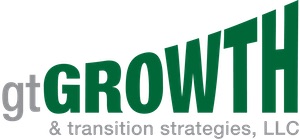If you haven’t eaten dinner with your family in the past week, haven’t taken a day off in over a year, and feel like you still don’t have enough time to finish your work, you’re doing something wrong.

Ivan Misner, founder and chairman of global networking organization BNI, knows how unbalanced life is while running your own business.
Misner has written 20 books, runs BNI offices across the world from North America to Asia, and has a wife and kids. If you ask him, he’ll tell you he doesn’t live a balanced life. He’ll also tell you that you’ll never achieve balance either. But, that doesn’t mean you can’t lead a healthy life.
The difference, Misner says, is not just semantics. “Harmony is something different. When you look at the scales of justice, people think balance is something they need but it’s not realistic,” he says. “For the entrepreneur, who has the most unbalanced life, [he or she] needs to get over it.”
Be here now.
Misner says three words are the key to start a harmonious life: “Be here now.” Whereever you are, be there in mind, body, and spirit. “When you’re at work, don’t think about the time you didn’t spend with your kids last night. Be at work,” Misner says. “If you’re home, don’t think about that project at the office, be with your kids. It sounds simple, but it’s not easy. If it was easy everyone would do it. This is about focus–focus on the people you are with and make sure to be fully and completely there.”
Make time for the most important things.
Set aside time for the most important things and tasks in your life. This sometimes means you’re going to need to get creative. Misner says it’s important for him not to be an absentee dad. So, he squeezes writing books into his night hours.
“I’d hang with the kids, eat family dinner together, hang out, put them to bed, and go into my office at home at 10 p.m. and work until 3, or 5 or 6, grab a few z’s, and go into the office,” he says. “When my first book came out, my oldest daughter was surprised, ‘When did you write a book?'” He’s now writing his 20th book.
Integrate tasks.
Unlike much of the advice you might read about creating solid work and life boundaries, Misner says merging them together is the only way to go.
“For many years, I’d spend summers at the lake house and work remotely. But then, I decided to bring my management team with me for three or four days at a time while my kids and wife were with us,” he says. “If you can integrate work-life elements together, you can create harmony. My life is way out of balance–I’m on the road for nine months this year, but I am not an absentee dad. My wife comes with me and our kids, who are now adults, will meet us and we’ll make it a vacation.”
Remember: You can’t have it all.
You can’t do it all. It’s impossible, Misner says, so you have to pick and choose and practicetime management. If you want to be a decent spouse, then make time to take off and recharge your battery. If an urgent work project comes up that will ruin the company, leave the vacation and make it up to them. But keep in mind this one thing: “Remember when you’re 70 years old, you’re not going to look back and wish you spent more time at the office,” Misner says. “But, you will regret not fostering a better relationship with your kids and partner.”
Will Yakowicz is a reporter at Inc. magazine. He has covered business, crime, and politics at Patch.com, and his work has been published in Tablet Magazine and The Brooklyn Paper.









